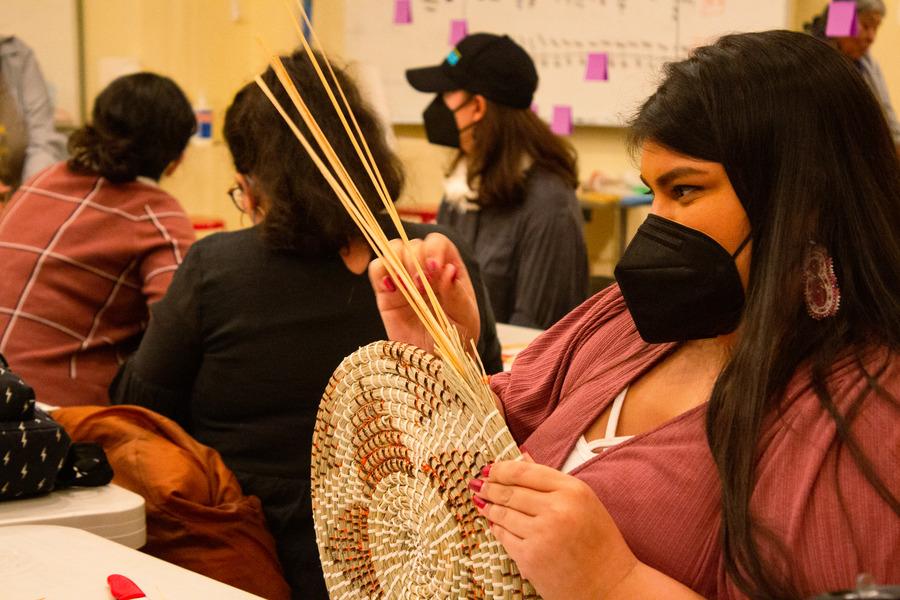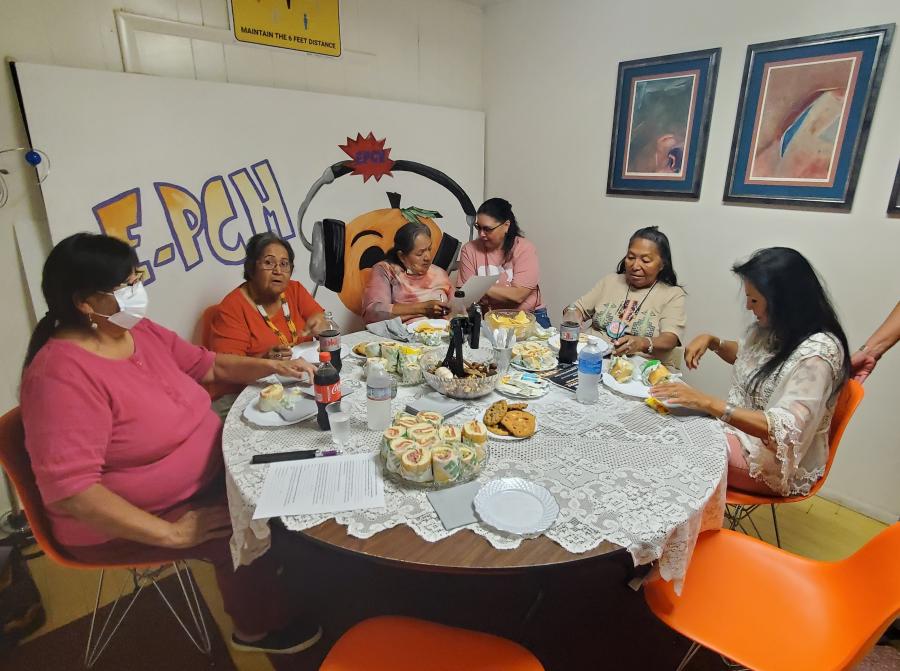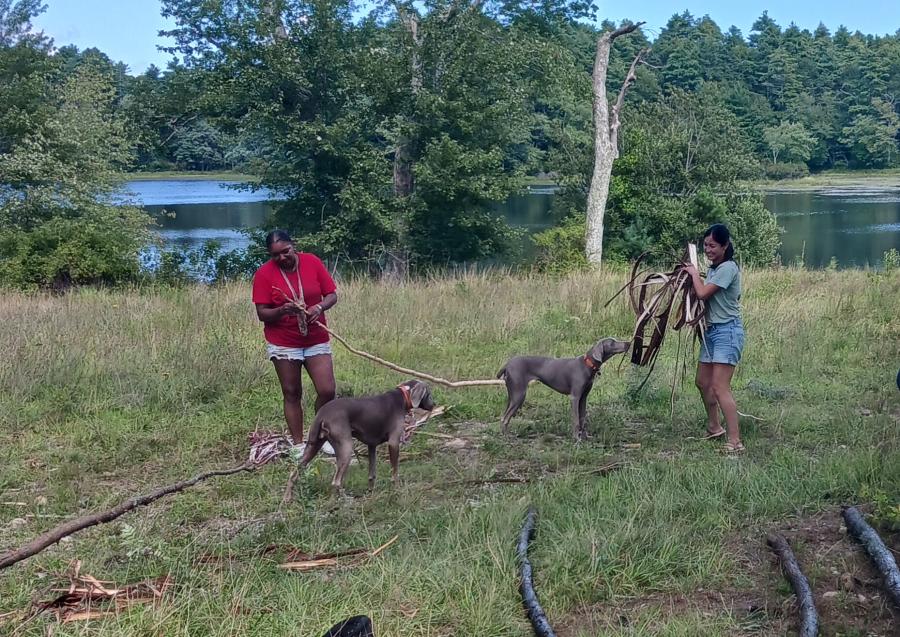On September 21, the National Museum of the American Indian (NMAI), the first U.S. national museum dedicated exclusively to Native Americans, opened on the National Mall in Washington, D.C. Festivities included a procession of more than 11,000 American Indians in traditional regalia, a dedication ceremony, a marketplace featuring Native-made arts and crafts, and an evening concert with Cree singer Buffy Sainte-Marie, as well as traditional music ranging from throat singing to Hawaiian chants.
Established in 1989 through an act of the U.S. Congress, the NMAI is an institution of living cultures dedicated to the life, languages, literature, history, and arts of the Native peoples of the Americas.
“Visitors will leave this museum knowing that Indians are not part of history,” said the museum’s founding director, Richard West of the Southern Cheyenne. “We are still here and making vital contributions to contemporary American culture and art.”
The mission of this new addition to the Smithsonian is to tell the story of Native Americans in their own voices. What stories would be told and how they would be told, and what objects would be displayed and how they would be displayed, were decisions made by representatives of Native communities from Alaska to Chile. Indigenous peoples determined the content, look, and feel of the museum, including the design of the five-story curvilinear building, the brainchild of Blackfoot architect Douglas Cardinal and Cherokee/Choctaw Johnpaul Jones. Clad in rough golden-toned limestone reminiscent of a landscape sculptured by wind and water over the immensity of time, this imposing structure was built in accordance with many Native traditions. It faces east, with the rising sun. It is also configured by the four compass points and surrounded by four indigenous habitats, in keeping with Native peoples’ sacred relationship with the land. More than 30,000 trees, shrubs, and other plants belonging to 150 species recreate an upland hardwood forest, lowland freshwater wetlands, eastern meadowlands, and traditional croplands.
A 13-minute introductory film in the Lelawi Theater (projected on four canvas screens surrounding a rock that transforms from a storyteller’s fire, into an icy expanse, then into a rushing creek) sets the tone for what is to come. Titled Who We Are, this multi-media production highlights Native American spirituality, history, and cultural survival.
The three major NMAI permanent exhibits, titled Our Universes, Our Lives, and Our Peoples are the result of collaboration with 24 indigenous communities from across the Western Hemisphere, said Gerald McMaster of the Plains Cree/Siksika Nation, the museum’s deputy assistant director for cultural resources. Peoples were selected on the basis of geographic diversity and relevance to the exhibit themes of philosophy, history, and identity.
“Visitors encounter a plethora of perspectives—even conflicting voices from the same tribe,” McMaster said.
The focus of Our Universes, curated by Emil Her Many Horses of the Oglala, is Native cosmology and the spiritual relationship between indigenous Americans and the natural world. Under a starry sky ceiling, exhibits explore annual ceremonies of Native peoples as windows intoancestral Native teachings. Spiritual leaders of the Pueblo, Anishinaabe, Lakota, Quechua, Hupa, Q ’eq’chi Maya, Mapuche, and Yup’ik were consulted in developing this display.
Pat Chaat Smith of the Comanche was the curator of Our Peoples, in which the Seminole, Tapirape, Kiowa, Tohono O’odham, Cherokee, Nahua, Ka’apor, and Wixarika share the stories of their struggles to maintain traditions in the face of adversity. Indigenous peoples are often portrayed in textbooks in narrow and inaccurate ways, but in this exhibit the visitor learns of the stories that have shaped American Indians as distinctive peoples. A highlight is a spectacular “wall of gold” featuring more than 400 gold figurines, swords, coins, and crosses dating back to 1490.
The curators for Our Lives, Gabrielle Tayac of the Piscataway and Jolene Rickard of the Tuscarora, examine 21st century Native identities. Showcased are the Kumeyaay, Yakama, Igloolik, Kahnawake, Saint-Laurent, Kalinago, Pamunkey, and the urban Indian community of Chicago. Videos, wall labels, photographs, and 300 cultural items work together to bring important contemporary Indian issues to the forefront. This exhibit also deals with the turbulent 1960s and 1970s when the Red Power movement was born.
Many American Indians who attended the opening of the NMAI responded positively to what they saw.
Gayokla Nichi, Jr., of the Blackfoot Nation said he felt that the museum will be a means for “bringing traditional people north and south all together and sealing the gap that a lot of people have created between Natives.”
“Every culture in society has their museums,” Nichi said. “Our culture is being stripped piece by piece; let’s rebuild our culture with the little bit that we still have. A museum is a good thing.”
Cultural Survival interns Abra Lyman and Katie Messick contributed to this report. Ian S. McIntosh works in the Offfice of International Affairs at Indiana University-Purdue University Indianapolis.



